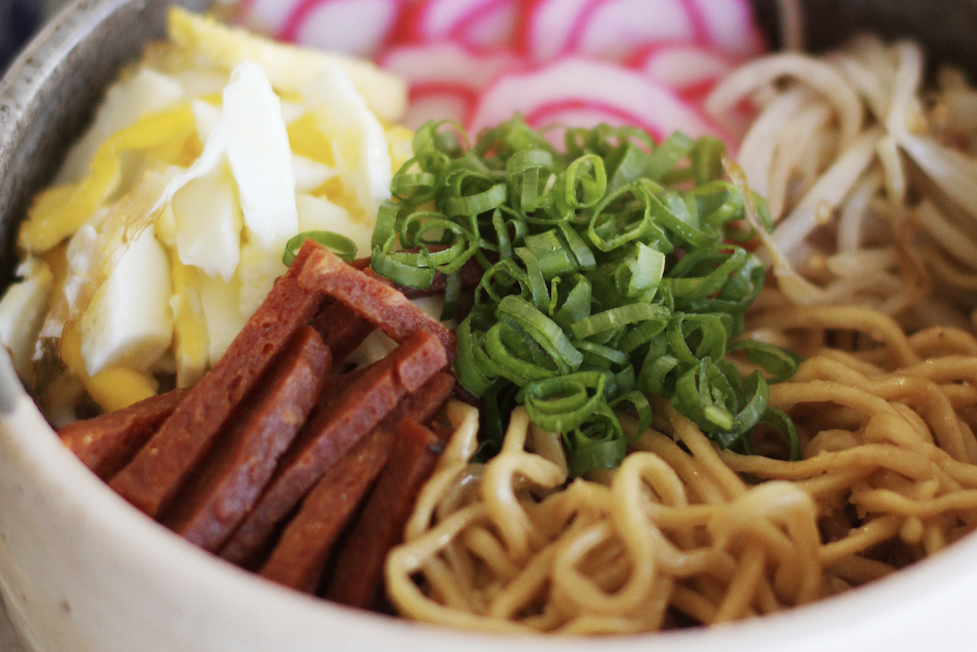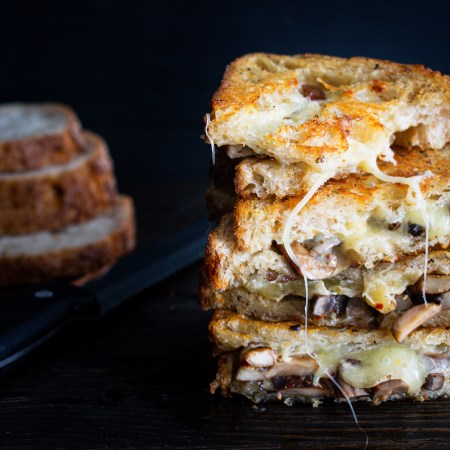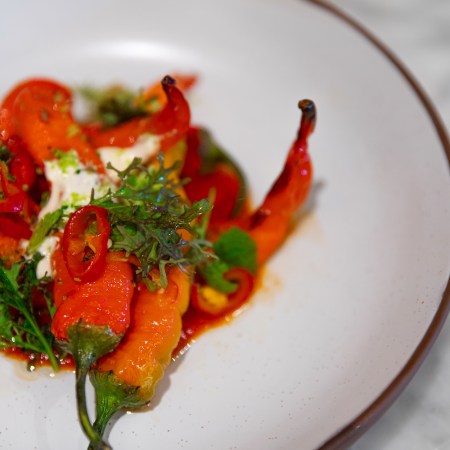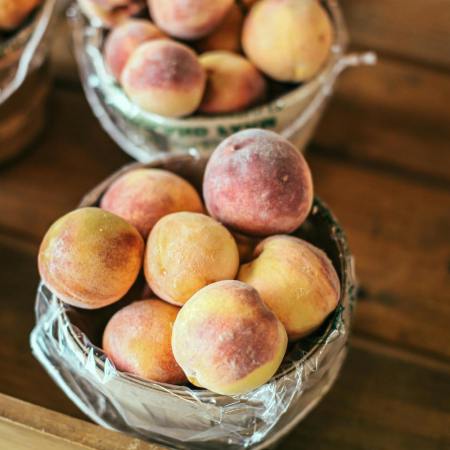To help celebrate a new product and a new year, Hormel executive Jay Hormel threw a New Year’s Eve party and asked his guests to submit their most creative names for his company’s new tinned offering of pork shoulder, water, salt, sugar and sodium nitrate.
A few cocktails into the evening, New York-based actor Kenneth Daigneau was paid $100 after Hormel fell in love with his four-letter answer. The first can of SPAM rolled off the production line seven months later, in July of 1937.
Popular on the menus of restaurants in the Minnesota town of Austin when George A. Hormel founded his namesake slaughterhouse and meatpacking facility in 1891, SPAM also became a staple of Hawaiian cuisine during World War II, when tinned meats were one of a few readily available sources of protein due to the government placing wartime restrictions on local fishing, which was largely being done by Japanese-Americans.
“SPAM played into the cuisine of Hawaii because it was a necessity,” Hawaiian chef Sheldon Simeon, the author of Cook Real Hawai’i: A Cookbook (out now), tells InsideHook. “It’s something that we’ve embraced. You’ll find SPAM musubi sitting there in every single convenience store or gas station. Maybe it’s not the healthiest thing and it’s not everything, but it is a part of our culture, It was something that people ate because that’s all they had. So, we embrace it. It’s in our cupboards and it is a staple in our pantries. Eating it has just been ingrained in us. It’s a childhood favorite. I have four kids and for some reason when I’m frying SPAM, they know to get out of bed early.”

In addition to being served in the musubi that’s sold throughout the state, SPAM is available with the dry mein Simeon, a two-time finalist onTop Chef, serves at his Maui restaurant Tin Roof. Derived from the Hawaiin version of ramen known locally as saimin, dry mein was originally made famous by family-owned eatery Sam Sato’s in Happy Valley Village. Essentially ramen served with toppings and garnishes, dry mein usually comes with a cup of broth on the side for dipping, sipping or splashing the seasoned noodles that serve as the basis of the dish.
“The noodles are dressed in flavors,” Simeon says. “Sometimes they are fried or sauteed, but mostly just they’re coated in dashi with the toppings on top and served with the broth on the side. You pick and choose how much soup you want. Traditionally, it’s served with soy sauce and hot mustard. It’s particularly a Maui favorite.”
At Tin Roof, the dry mein is topped off with fried egg strips, bean sprouts, green onions and, of course, fried SPAM.
“You’ve got this chewy saimin noodle that’s packed with umami punch, saltiness from the SPAM and then a broth that is made slightly neutral, not over the top,” Simeon says. “We like the convenience of SPAM. Also, we love the saltiness of it. Cutting it into julienne strips and then frying it up …. it lends itself to be this nice salty backdrop against the noodles and the broth. We go through two cases of SPAM daily. The Costcos here in Maui have pallets stacked up. We just get it by the cases now.”
You won’t need a case, but you will need a tin of Hormel’s porky product to make Simeon’s signature dry mein.
Chef Sheldon Simeon’s Dry Mein
Ingredients
- Salt
- 1 (12-ounce) can SPAM, julienned
- 6 tablespoons neutral oil
- 4 large eggs
- Garlic salt
- Ground white pepper
- 4 ounces (about 1 ½ cups) bean sprouts
- 1 pound fresh saimin, ramen, or chow mein noodles
- ¼ cup shoyu (soy sauce), plus more for serving
- 1 tablespoon oyster sauce
- 2 teaspoons instant dashi powder (such as HonDashi)
- 4 ounces kamaboko (fish cake), sliced
- ¼ cup thinly sliced scallions
- Chinese hot mustard, for serving
- Instant Saimin Broth (optional), for serving
Instructions
- Bring a large pot of salted water to a boil over high heat.
- In a large skillet over medium-high heat, arrange the Spam in a single layer and cook until crispy and browned on all sides, about six minutes.
- Remove the Spam from the pan and set aside.
- Add three tablespoons of the oil to the pan. Crack in the eggs and fry undisturbed, until the yolks are cooked and the edges are crispy, seasoning with garlic salt and white pepper to taste. Remove the eggs to a cutting board. Once the eggs are cooled, slice into 1/2-inch-wide strips.
- Place the bean sprouts in a colander and set the colander in the sink.
- Loosen the noodles and add to the boiling water. When the water returns to a boil, the noodles should be nearly done (two to three minutes; or follow the package directions). Check the noodles by taste or touch. They should be tender but springy.
- Drain the noodles over the bean sprouts in the colander. Let both drain thoroughly.
- While the noodles are still warm, in a large bowl, whisk together the remaining three tablespoons of oil, the shoyu, oyster sauce, dashi powder and a pinch of white pepper.
- Add the noodles and bean sprouts and toss to coat with the sauce. Transfer the noodle/sprout mixture to a serving bowl or individual bowls and garnish with the Spam, sliced eggs, kamaboko, and scallions.
- Serve with a small dish of hot mustard, drizzled to taste with shoyu. If desired, serve with a cup of saimin broth.
(Recipe reprinted with permission from Cook Real Hawai’i by Sheldon Simeon and Garrett Snyder, copyright © 2021. Published by Clarkson Potter/Publishers, an imprint of Penguin Random House. Photography copyright: Kevin J. Miyazaki © 2021.)
Join America's Fastest Growing Spirits Newsletter THE SPILL. Unlock all the reviews, recipes and revelry — and get 15% off award-winning La Tierra de Acre Mezcal.
























